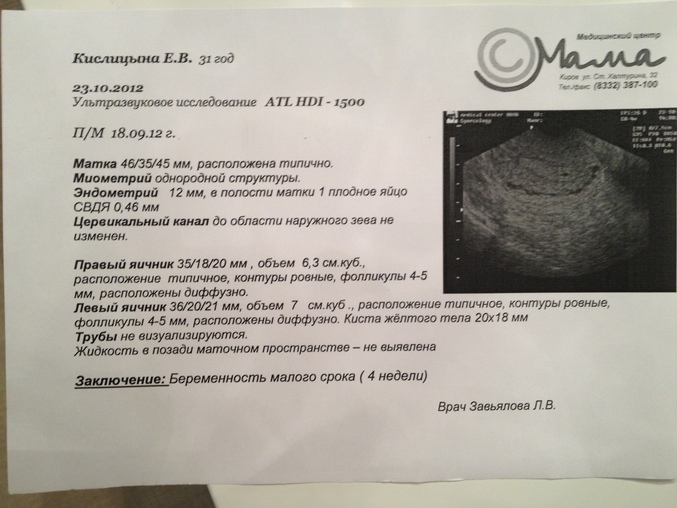4 Weeks Pregnant Bleeding with Clots: Are Blood Clots Normal in Early Pregnancy?
Are blood clots normal in early pregnancy? What causes vaginal bleeding and blood clots during pregnancy? Learn about the common and serious causes of bleeding in the first, second, and third trimesters.
Causes of Vaginal Bleeding and Blood Clots in Early Pregnancy
Vaginal bleeding and the presence of blood clots are relatively common occurrences during the first trimester of pregnancy, affecting around 20% of pregnant women. While this can understandably be alarming, many of the potential causes are not necessarily indicative of a serious problem. Some of the common reasons for bleeding and clots in early pregnancy include:
Implantation Bleeding
As the fertilized egg implants itself in the uterine lining, some women experience light spotting or bleeding that may be mistaken for a menstrual period. This typically occurs within the first 6-12 days after conception and is usually very light, lasting for just a few hours to a few days.

Miscarriage
Sadly, miscarriage is a common occurrence in the first trimester, affecting around 10-20% of known pregnancies. Bleeding and passing of tissue through the vagina are common symptoms of a miscarriage. However, it’s important to note that first trimester bleeding does not necessarily mean a miscarriage will occur – over 90% of women who experience bleeding in early pregnancy will not lose the pregnancy.
Ectopic Pregnancy
In an ectopic pregnancy, the fertilized egg implants outside of the uterus, usually in the fallopian tube. Ectopic pregnancies can be life-threatening if the tube ruptures, and bleeding is a common symptom. Ectopic pregnancies only occur in about 2% of pregnancies.
Molar Pregnancy
Molar pregnancy, or gestational trophoblastic disease, is a very rare condition in which abnormal tissue grows inside the uterus instead of a baby. This can sometimes be cancerous and spread to other parts of the body. Severe nausea, vomiting, and rapid uterine enlargement are other symptoms of molar pregnancy.

Cervical Changes
The increased blood flow to the cervix during pregnancy can make it more prone to bleeding, especially after intercourse or a Pap test. This type of bleeding is not usually a cause for concern.
Infection
Infections of the cervix, vagina, or sexually transmitted infections like chlamydia, gonorrhea, or herpes can also trigger bleeding in early pregnancy.
Causes of Bleeding in Late Pregnancy
While bleeding in the first trimester is relatively common, bleeding later in pregnancy may be more concerning, as it can signal a problem with the mother or baby. Some potential causes of bleeding in the second or third trimester include:
Placenta Previa
Placenta previa is a condition where the placenta partially or completely covers the cervix. This can cause painless bleeding and is considered a medical emergency requiring immediate attention.
Placental Abruption
Placental abruption occurs when the placenta partially or completely detaches from the uterine wall before delivery. This can be very dangerous for both the mother and baby, and is accompanied by symptoms like abdominal pain, clots, and uterine tenderness.

Uterine Rupture
In rare cases, a scar from a previous C-section can tear open during pregnancy, causing life-threatening bleeding. Symptoms include abdominal pain and tenderness.
Vasa Previa
Vasa previa is an extremely rare condition where the baby’s blood vessels cross the cervix, which can lead to severe bleeding and loss of oxygen for the baby.
Preterm Labor
Vaginal bleeding in late pregnancy may simply be a sign that the body is getting ready for preterm labor. The passing of the mucus plug, known as “bloody show”, is one such indicator.
When to Seek Medical Attention for Bleeding
Any amount of vaginal bleeding during pregnancy should be reported to your healthcare provider, as it can be a sign of a serious issue. However, it’s important to note that bleeding does not necessarily mean a miscarriage or other major complication. If the bleeding is accompanied by severe cramps, heavy bleeding, or other concerning symptoms, seek medical care immediately. Otherwise, your doctor may simply want to monitor the situation or perform an ultrasound to check on the baby’s well-being.

Managing Bleeding and Clots During Pregnancy
If you experience vaginal bleeding or blood clots during pregnancy, your doctor may recommend the following steps:
- Rest and avoid strenuous activity
- Use sanitary pads rather than tampons
- Avoid sexual intercourse until the bleeding stops
- Stay hydrated and nourished
- Monitor the bleeding and report any changes or worsening to your doctor
When to Seek Emergency Care
Seek immediate medical attention if you experience any of the following during pregnancy:
- Heavy, bright red bleeding
- Severe abdominal pain or cramping
- Lightheadedness or dizziness
- Fever
These symptoms could be signs of a serious complication that requires prompt treatment to protect the health of both the mother and baby.
Conclusion
Vaginal bleeding and the presence of blood clots are relatively common in early pregnancy, with many potential causes ranging from normal implantation to more serious conditions like miscarriage or ectopic pregnancy. While concerning, it’s important to remember that bleeding does not necessarily mean something is wrong. However, any bleeding should be reported to your healthcare provider, who can determine the cause and provide appropriate monitoring and treatment. By understanding the potential causes and knowing when to seek medical care, you can help ensure the health and safety of both you and your baby during this critical time.

Vaginal Bleeding and Blood Clots During Pregnancy
Written by Stephanie Watson
In this Article
- Bleeding in the First Trimester
- Bleeding in the Second and Third Trimesters
- What to Do If You Have Abnormal Bleeding During Pregnancy
Bleeding during pregnancy is common, especially during the first trimester, and usually it’s no cause for alarm. But because bleeding can sometimes be a sign of something serious, it’s important to know the possible causes, and get checked out by your doctor to make sure you and your baby are healthy.
About 20% of women have some bleeding during the first 12 weeks of pregnancy. Possible causes of first trimester bleeding include:
Implantation bleeding. You may experience some normal spotting within the first six to 12 days after you conceive as the fertilized egg implants itself in the lining of the uterus. Some women don’t realize they are pregnant because they mistake this bleeding for a light period. Usually the bleeding is very light and lasts from a few hours to a few days.
Usually the bleeding is very light and lasts from a few hours to a few days.
Miscarriage. Because miscarriage is most common during the first 12 weeks of pregnancy, it tends to be one of the biggest concerns with first trimester bleeding. However, first trimester bleeding does not necessarily mean that you’ve miscarried or will miscarry. In fact, if a heartbeat is seen on ultrasound, over 90% of women who experience first trimester vaginal bleeding will not miscarry.
Other symptoms of miscarriage are strong cramps in the lower abdomen and tissue passing through the vagina.
Ectopic pregnancy. In an ectopic pregnancy, the fertilized embryo implants outside of the uterus, usually in the fallopian tube. If the embryo keeps growing, it can cause the fallopian tube to burst, which can be life-threatening to the mother. Although ectopic pregnancy is potentially dangerous, it only occurs in about 2% of pregnancies.
Other symptoms of ectopic pregnancy are strong cramps or pain in the lower abdomen, and lightheadedness.
Molar pregnancy (also called gestational trophoblastic disease). This is a very rare condition in which abnormal tissue grows inside the uterus instead of a baby. In rare cases, the tissue is cancerous and can spread to other parts of the body.
Other symptoms of molar pregnancy are severe nausea and vomiting, and rapid enlargement of the uterus.
Additional causes of bleeding in early pregnancy include:
- Cervical changes. During pregnancy, extra blood flows to the cervix. Intercourse or a Pap test, which cause contact with the cervix, can trigger bleeding. This type of bleeding isn’t cause for concern.
- Infection. Any infection of the cervix, vagina, or a sexually transmitted infection (such as chlamydia, gonorrhea, or herpes) can cause bleeding in the first trimester.
Abnormal bleeding in late pregnancy may be more serious because it can signal a problem with the mother or baby. Call your doctor as soon as possible if you experience any bleeding in your second or third trimester.
Possible causes of bleeding in late pregnancy include:
Placenta previa. This condition occurs when the placenta sits low in the uterus and partially or completely covers the opening of the birth canal. Placenta previa is very rare in the late third trimester, occurring in only one in 200 pregnancies. A bleeding placenta previa, which can be painless, is an emergency requiring immediate medical attention.
Placental abruption. In about 1% of pregnancies, the placenta detaches from the wall of the uterus before or during labor and blood pools between the placenta and uterus. Placental abruption can be very dangerous to both the mother and baby.
Other signs and symptoms of placental abruption are abdominal pain, clots from the vagina, tender uterus, and back pain.
Uterine rupture. In rare cases, a scar from a previous C-section can tear open during pregnancy. Uterine rupture can be life-threatening, and requires an emergency C-section.
Other symptoms of uterine rupture are pain and tenderness in the abdomen.
Vasa previa. In this very rare condition, the developing baby’s blood vessels in the umbilical cord or placenta cross the opening to the birth canal. Vasa previa can be very dangerous to the baby because the blood vessels can tear open, causing the baby to bleed severely and lose oxygen.
Other signs of vasa previa include abnormal fetal heart rate and excessive bleeding.
Premature labor. Vaginal bleeding late in pregnancy may just be a sign that your body is getting ready to deliver. A few days or weeks before labor begins, the mucus plug that covers the opening of the uterus will pass out of the vagina, and it will usually have small amounts of blood in it (this is known as “bloody show”). If bleeding and symptoms of labor begin before the 37th week of pregnancy, contact your doctor right away because you might be in preterm labor.
Other symptoms of preterm labor include contractions, vaginal discharge, abdominal pressure, and ache in the lower back.
Additional causes of bleeding in late pregnancy are:
- Injury to the cervix or vagina
- Polyps
- Cancer
Because vaginal bleeding in any trimester can be a sign of a problem, call your doctor. Wear a pad so that you can keep track of how much you’re bleeding, and record the type of blood (for example, pink, brown, or red; smooth or full of clots). Bring any tissue that passes through the vagina to your doctor for testing. Don’t use a tampon or have sex while you are still bleeding.
Your doctor might recommend that you rest as much as you can and avoid exercise and travel.
You should expect to receive an ultrasound to identify what the underlying cause of your bleeding may be. Vaginal and abdominal ultrasounds are often performed together as part of a full evaluation.
Go to the emergency room or call 911 right away if you have any of the following symptoms, which could be signs of a miscarriage or other serious problem:
- Severe pain or intense cramps low in the abdomen
- Severe bleeding, with or without pain
- Discharge from the vagina that contains tissue
- Dizziness or fainting
- A fever of more than 100.
 4 or more degrees Fahrenheit and/or chills
4 or more degrees Fahrenheit and/or chills
Top Picks
Bleeding in Early Pregnancy: What Does It Mean?
What causes bleeding during early pregnancy?
About one in every four women will have vaginal bleeding during the first few months of pregnancy. Many things can cause it. Some of the most common causes are threatened abortion, ectopic (eck-TAH-pick) pregnancy, and spontaneous abortion.
Many things can cause it. Some of the most common causes are threatened abortion, ectopic (eck-TAH-pick) pregnancy, and spontaneous abortion.
A threatened abortion is when there is bleeding from the uterus but the pregnancy is still normal. Sometimes a blood clot forms in the uterus, increasing the risk of miscarriage. However, most women who have a threatened miscarriage will deliver a healthy baby.
An ectopic pregnancy is when the fetus grows outside the uterus, usually in the fallopian tubes. If this happens, the area where the pregnancy is can bleed heavily. This can put the mother’s life at risk.
A spontaneous abortion means there is a miscarriage. This happens when the pregnancy fails and there is no living tissue in the uterus. Sometimes the mother needs to take medicines or have a procedure done to remove tissue or to stop the bleeding.
Other causes of early pregnancy bleeding include infections, hemorrhoids (HEM-roids; swollen veins in your rectum or anus), cervical cancer, and rare pregnancy-related cancers.
What should I do if I am bleeding?
Call your doctor right away. If you have heavy bleeding or severe pain, you should go to the emergency room.
Your doctor can do different tests to see why you are bleeding. You may need a pelvic exam, an ultrasound, or blood or urine tests. Sometimes an ultrasound is enough to make sure your pregnancy is healthy. However, if you are very early in your pregnancy, you may need more tests to help your doctor find the cause of the bleeding.
How is it treated?
The treatment depends on the cause of the bleeding. There is no way to stop a threatened miscarriage with medicines after the bleeding starts. If you have a miscarriage, your doctor will watch to see if the tissue passes on its own, or if you will need medicines or a procedure to help remove it. Tissue from an ectopic pregnancy needs to be removed with medicines or surgery. Some women with certain blood types may need a shot to help prevent problems in future pregnancies.
What can I do to prevent a miscarriage?
Keeping your body healthy is the best way to have a healthy pregnancy and baby. You should not smoke cigarettes, drink alcohol, or take street drugs. Taking a prenatal vitamin with folic acid before you get pregnant can lower the risk of brain and spinal cord problems in your baby. If you have medical problems like high blood pressure or diabetes, talk with your doctor about the care you will need during your pregnancy. It is best to talk about this before you get pregnant, if possible.
There is no way to prevent a miscarriage after bleeding has started. There is also no way of knowing exactly why a miscarriage happens. Usually it is not because the mother did anything wrong. Most women who have had a miscarriage can have healthy pregnancies in the future. If you have lost more than three pregnancies, talk to your doctor about other tests and treatments.
Where can I get more information?
Your doctor
American Academy of Family Physicians
National Institutes of Health: Medline Plus
Web sites: http://www.
 nlm.nih.gov/medlineplus/ency/article/003264.htm
nlm.nih.gov/medlineplus/ency/article/003264.htmor
http://www.nlm.nih.gov/medlineplus/ency/article/001488.htm
Pathological and physiological causes of bleeding during early pregnancy
The gestation period is a complex process that does not always go well. Every second woman has various complications. Most often, women go to the doctor with complaints of spotting. Why does bleeding occur during early pregnancy, how dangerous is it?
Causes
Blood in the first trimester of pregnancy in the vaginal secretion is observed in 30% of expectant mothers. Bleeding can be weak, spotting, plentiful.
Most often, blood during early pregnancy is observed during implantation of the fetal egg. When the egg is attached, the vessels are often damaged, which leads to the appearance of blood secretions. They are similar to menstruation, last 1-2 days.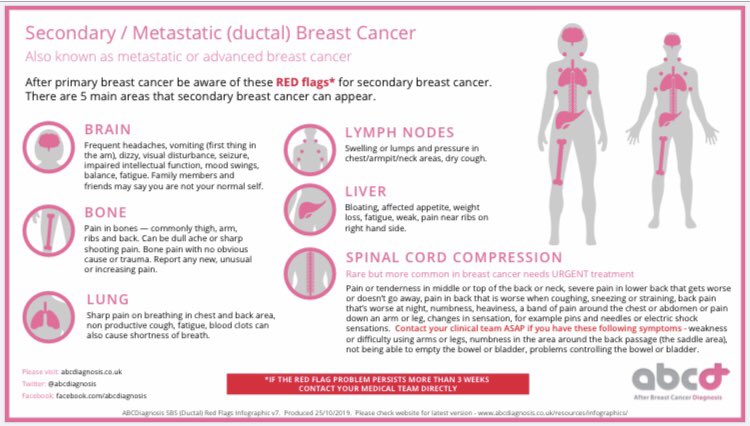 This process is considered natural, does not indicate any pathologies.
This process is considered natural, does not indicate any pathologies.
Any bloody discharge during early pregnancy is a reason for an urgent appeal to a gynecologist. Even if there is no additional discomfort. At a remote consultation, our doctor will collect an anamnesis, draw up a clinical picture in order to identify the cause of bleeding. And he will select effective methods to eliminate the problem.
Blood during pregnancy – other common causes
In addition to the main ones, there are some other reasons why pathology can develop.
No. | Cause |
1 | Excessive exercise, deep penetration during intercourse. If the cervix is damaged, slight red discharge occurs, which disappears within two hours. |
2 | Progesterone deficiency. |
3 | Miscarriage – occurs in 2-8% of pregnant women. It is characterized by pain in the lower abdomen, which is rapidly increasing, bloody discharge at the beginning of pregnancy. The causes of the pathological condition can be different – infectious diseases, fetal malformations that are incompatible with life, dehydration, abdominal trauma, taking certain drugs. |
4 | Ectopic pregnancy. Dangerous condition, urgent hospitalization is required. |
5 | A failed miscarriage. Blood discharge during pregnancy, abdominal pain are the main manifestations of intrauterine development of the fetus. |
6 | Infections. To avoid dangerous complications, it is necessary to treat diseases. Parents of both sexes should be tested. |
7 | Full or partial hydatidiform mole. Pathology of the chorion, in which the size of the villi increases, bubble expansions form. The risk group includes women with ovarian dysfunction, inflammatory diseases of the reproductive system, and a history of cystic mole. Bleeding is profuse and constant, characteristic blisters are present. The symptoms of early toxicosis are very pronounced, the size of the uterus, the hCG indicators do not correspond to the gestational age. |
8 | Cervical cancer. Pregnant women are rarely diagnosed. The risk group includes women with a large number of abortions and childbirth, often changing sexual partners. |
9 | Subchorionic hematoma. |
10 | Cervical erosion. Detected in 50% of women. For pregnant women, the disease is not dangerous, but constant medical supervision is needed. |
Bleeding in the first trimester can be caused by causes that appear at any gestational age. These are fibroids, polyps in the uterus and cervical canal, cardiovascular pathologies that are associated with a weakening of the endothelium.
Physiological or pathological bleeding during gestation – differences
Clinical manifestations of bleeding in pregnant women depend on the causes of occurrence. Physiological discharge of blood from the genital tract in the early stages of gestation proceeds without deterioration in well-being. With bleeding caused by erosion, fibroids and polyps, there are also no additional discomfort. In this case, only a few drops of blood are released, it bleeds for a short time.
In this case, only a few drops of blood are released, it bleeds for a short time.
Abundant bleeding, similar to menstruation, against the background of a general satisfactory condition, occurs with a deficiency of progesterone.
Bleeding with spontaneous interruption is accompanied by constant or periodic pain in the lumbar region, abdomen. Disturbed by nausea, bouts of dizziness, slightly increased body temperature. Bleeding can be weak or intense, and clots are often observed in the discharge.
When a fertilized egg is fixed outside the uterus, internal bleeding often occurs, and discharge from the genital tract may appear much later. Characteristic manifestations – acute pain in the abdomen radiates to the anal region, right or left side, blood pressure decreases, cold sweat appears, fainting is possible. Significant blood loss leads to the development of a state of shock with a high probability of death.
Implantation bleeding
Why does it bleed at the initial stages of gestation? Most often, the appearance of spotting during pregnancy is associated with the implantation of the embryo. They occur 6-12 days after conception and are often one of the first signs of conception.
They occur 6-12 days after conception and are often one of the first signs of conception.
Usually, the appearance of spotting at the beginning of pregnancy coincides with the time of the onset of menstruation, if the cycle is regular. But discharge in pregnant women is not as abundant as menstrual bleeding. Duration – from several hours to three, with the first pregnancy up to 5 days.
How does implantation bleeding manifest?
- weak, pulling pain in the lower abdomen;
- headache, dizziness;
- sudden change of mood;
- bouts of nausea;
- increased sensitivity, swelling of the mammary glands;
- fatigue, drowsiness.
Important! When the embryo is implanted, little blood is released, usually these are small spots. The discharge may be pink, brown, orange, and there should be no clots.
Early dates
The first months of pregnancy are the most difficult and dangerous. It is in the early stages that various pathologies and complications often appear.
It is in the early stages that various pathologies and complications often appear.
Why blood may appear in the early stages during pregnancy:
- At the 4th week of pregnancy, discharge with an admixture of blood may appear – this is implantation bleeding. Heavy bleeding is a dangerous sign, most often indicates a miscarriage. Spontaneous abortion can be caused by exercise, fever, infections, drugs or alcohol. Such bleeding is profuse, painful, blood clots are present.
- The appearance of sanious discharge at the 5th week of pregnancy may be a sign of a missed pregnancy. The reasons are overwork, Rh conflict, bad habits, bacterial and viral diseases of the reproductive system, genetic disorders in the embryo. Symptoms – causeless fever, severe pain in the lower back and lower abdomen, the disappearance of signs of toxicosis.
- Blood in the discharge at the 6th week of pregnancy appears with an ectopic attachment of the fetal egg, fetal fading, Rhesus conflict.
 Discharge with blood at 6 weeks of pregnancy is a reason for an urgent visit to the gynecologist.
Discharge with blood at 6 weeks of pregnancy is a reason for an urgent visit to the gynecologist. - At the 7th week of pregnancy, discharge with blood is not the norm. May indicate a miscarriage, missed or ectopic pregnancy.
- From the 8th week of pregnancy, one of the most dangerous periods of pregnancy begins. The formation of the placenta begins, the hormonal background changes. Bloody discharge appears with the threat of miscarriage or spontaneous abortion. Pregnancy is often not saved.
Pay attention! In the second trimester, bleeding occurs only in 5-10% of women. Most often this is due to late spontaneous abortion, isthmic-cervical insufficiency. The appearance of blood in the third trimester mainly occurs with presentation, placental abruption.
ECO
The appearance of blood discharge during pregnancy on the 8-10th day after IVF is not considered a pathology, provided that the woman feels normal. After the introduction of the embryo into the uterine cavity, minor damage to the small uterine vessels often occurs. Brown, dark cream, pale pink, odorless discharge most often indicates a successful transplant, pregnancy.
Brown, dark cream, pale pink, odorless discharge most often indicates a successful transplant, pregnancy.
If spotting after IVF is observed for 1-2 days, slight pulling pains in the lower abdomen are disturbing, this may be due to a progesterone deficiency. After the examination, the doctor will adjust the hormonal maintenance therapy.
Pink discharge on the 16th day after the transfer is a dangerous symptom. It may be a sign of detachment of the fetal egg, the threat of termination of pregnancy.
According to studies, uterine bleeding in the first trimester is a common occurrence in pregnancy after IVF. Discharge does not affect the incidence of adverse reproductive outcomes. The number of embryo rejections in women with and without uterine bleeding is approximately the same. Consult with our doctors by phone for more details.
Diagnostics
If blood has gone from the genitals of a pregnant woman, the doctor conducts an external and gynecological examination.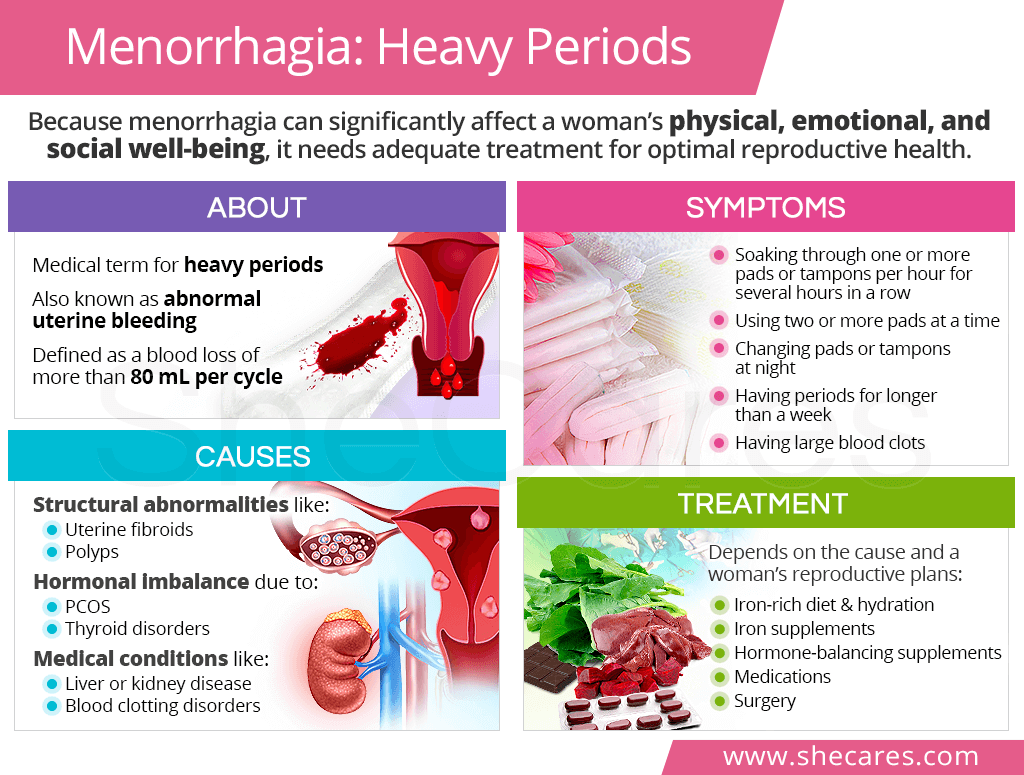
Analyzes and examinations:
- general and biochemical blood test;
- general urine analysis;
- tests for hCG, other hormones;
- Ultrasound of the pelvic organs;
- CTG is performed to assess the vital activity of the fetus.
Treatment
Methods of treatment depend on the results of the examination.
Bloody discharge in the first trimester – causes and therapeutic measures:
Causes | Treatment |
Miscarriage | Cleansing the uterus. |
Ectopic pregnancy | Diagnostic laparoscopy, removal of residual fetal tissues, antibiotic therapy. |
Risk of miscarriage | Hospitalization, bed rest, prescribing drugs to maintain pregnancy, sedatives and tocolytics to reduce uterine tone. |
bubble skid | Curettage of the uterine cavity. |
Cervical cancer | Operational intervention. |
Polyp injury, cervical erosion | Expectant management, if the condition does not worsen, removal and cauterization is carried out after childbirth. |
progesterone deficiency | hormone therapy. |
Damage to the uterus | Complete bed rest. |
Infectious pathologies | Depending on the type of pathogen – antibiotics, antiviral or antifungal drugs. |
Complications and consequences
It is impossible to ignore bloody impurities in vaginal discharge during pregnancy. Without proper and timely assistance, the following complications may occur:
- miscarriage;
- intrauterine fetal death;
- the development of an infectious process, sepsis due to the remainder of dead tissues in the uterine cavity;
- profuse blood loss can lead to death.

Important! Urgent medical attention is needed in case of heavy bleeding, discharge of bright scarlet blood, presence of blood clots in the discharge. In life-threatening and fetal conditions, severe pain in the abdomen, lower back, convulsions, profuse cold sweat, and loss of consciousness are disturbing.
Methods of prevention
If there is blood in the first trimester, it is important to remain calm. Stress and anxiety will only exacerbate the situation. But any health problem is easier to prevent than to treat.
How to avoid bleeding during childbearing – recommendations from a gynecologist:
- eat right and balanced, give up junk and junk food, eat more fresh vegetables and fruits;
- observe the drinking regime;
- in the absence of contraindications, moderate physical activity is indicated – yoga, swimming, special gymnastics for pregnant women;
- more time to walk in the fresh air;
- avoid stress, overwork, observe the daily routine, get enough sleep;
- give up bad habits, do not be in smoky rooms;
- timely visit a gynecologist;
- according to the doctor’s prescription, take vitamin complexes for pregnant women;
- do not self-medicate.

The prognosis for bleeding during gestation depends on the causes and timely visit to the doctor. Properly provided medical care can save the life of the fetus and the woman.
FAQ
Why is there blood from the genital tract during gestation?
+
The causes of bleeding in early pregnancy are different. Most often, spotting appears when the fetal egg is fixed, progesterone deficiency, with erosion of the cervix and polyps. Dangerous causes – ectopic, molar, miscarriage, miscarriage.
What to do if there is bleeding during pregnancy?
+
Much depends on the amount of blood released, general well-being. If the bleeding is not strong, not for long, the general condition is normal, it is enough to lie down and rest. Write down the date of the attack, inform the doctor at the next visit. But if even slight spotting during early pregnancy lasts more than 72 hours, is accompanied by cramping or acute pain, fever, you should immediately visit a gynecologist or call an ambulance.:max_bytes(150000):strip_icc()/why-are-there-blood-clots-in-my-period-2721935_final-b4d12209f16a4e558194b7d49383aafc.png)
How can you recognize a miscarriage?
+
With the threat of interruption, spotting is scanty, pain in the lower abdomen is absent or may be dull, aching. The condition is considered reversible, with timely treatment, pregnancy can be saved. If a miscarriage has begun, bleeding intensifies, cramping pain appears. The general condition is satisfactory. Urgent hospitalization is required, the probability of maintaining pregnancy is decided on an individual basis.
Expert opinion
Bleeding during pregnancy is a dangerous symptom. Sometimes spotting can be caused by physiological causes. But often such a symptom appears in life-threatening conditions for the woman and the fetus.
We publish only verified information
Article author
Menshikova Maria Viktorovna
obstetrician-gynecologist
Experience 38 years
Consultations 1816
Articles 95
Specialist with extensive practical experience. He has a certificate of a mammologist, a certificate of professional certification. Participates in foreign business trips and individual training programs (Los Angeles).
He has a certificate of a mammologist, a certificate of professional certification. Participates in foreign business trips and individual training programs (Los Angeles).
- 1982 – 1986 NPO MONIIAG – obstetrician-gynecologist
- 1987 – 1989 VNITs OZMIR – obstetrician-gynecologist
- 1989 – 1992 departmental polyclinic st. Moscow – Kurskaya – obstetrician-gynecologist
- 1992 – 2001 NPO MONIIAG – obstetrician-gynecologist
- 2007 – 2008 NP KMIKM – doctor administrator
- 2009 – 2013 Pereslavl Central District Hospital, women’s consultation – obstetrician-gynecologist
- 2020 to present Teledoctor24 LLC – doctor – consultant (gynecologist)
The question is asked by Anya, – a question-answer from the specialists of the clinic “Mother and Child”
23.10.2014
Hello! I have a second pregnancy (my son is 1 year 2 months), the term is 13-14 weeks. At the 11th week, heavy bleeding began (until that time, nothing bothered) and I was admitted to the hospital with a diagnosis of “beginning miscarriage. ” Heavy bleeding lasted from 13.00 to 16.00, then it bled a little all the next day, and on the third day the discharge began to darken and disappeared. The next morning after admission, I had an ultrasound scan (06/04/05), which showed:
” Heavy bleeding lasted from 13.00 to 16.00, then it bled a little all the next day, and on the third day the discharge began to darken and disappeared. The next morning after admission, I had an ultrasound scan (06/04/05), which showed:
The uterus in anteflexio, with clear, even contours, rounded, enlarged due to pregnancy and according to its duration. Meometrium of normal structure and echogenicity, without nodules and retrochorial hematomas, in which one live embryo is visualized. The placenta is formed on the right side with the transition to the anterior wall of the uterus, up to 1.2 m thick. The amount of water is normal. The internal os of the uterus is completely closed.
The results of the analyzes: Cl. blood test: Er – 4, 15; Hb – 124; Ht – 35, 8; L-9, 4; P – 6; C – 73; L – 18; M-3; E-0; ESR – 22. General analysis of urine: Specified weight -1010, PH – Neutral; Protein, Glucose, erythrocytes – neg; L – 1-2-1; epithelium singly. Biochem. blood test: Common. Protein – 65.0; Urea – 3, 2; Creatinine – 76; Bilirubin – 12-0-12; Alat – 23; AsAt – 59; Glucose – 3, 4.
Gr. Blood A (II) Rh – factor positive. RW, HIV, HBs Ag – negative, DHA – 1.88.
Treatment was prescribed: No-shpa 2, 0-3 times / m, papaverine 2 times, utrozhestan 1 t – 2 times, Vite 1-3 times, dicynone 2, 0 – 2 times / m, valerian 1 – 3 times, dexamethasone ½ tab. H night, magneB6 2-3 times, Materna 1. a day.
While I was in the hospital, I bled a little bit a couple of times, and every day there were periodically pulling pains and tingling in the lower abdomen. She was discharged after 2 weeks, the medications were the same (except for decinone). The next day after discharge, dark brown discharge appeared again, on the same day I did a new ultrasound (06/20/05) results: Pregnancy 14 weeks, One live embryo is determined in the uterine cavity, the size of the fetus is proportional and corresponds to a period of 12 weeks. Rhythmic heartbeat 10 beats/min. Motor activity is determined by malformations not identified. Chorion along the anterior wall of the uterus On the degree of maturity. The thickness of the placenta is 16 mm. The tone of the myometrium is slightly increased along the anterior wall. The cervix is not shortened. The cervical canal is closed.
The thickness of the placenta is 16 mm. The tone of the myometrium is slightly increased along the anterior wall. The cervix is not shortened. The cervical canal is closed.
I have a few questions: How might such a threat affect a child’s development? What additional tests should be taken to clarify the cause of the threat? How long to take the prescribed medication in this amount? Could the short period between pregnancies be the cause of the threat?
Thank you for your advice
Clinic “Mother and Child” Kuntsevo:
01/27/2021
The presence of short-term bleeding during pregnancy with normal blood tests and ultrasound data (adequate fetal development, absence of detachment of the placenta) does not have a negative effect on the fetus. In such cases, it is necessary to exclude inflammation of the vagina, a decidual polyp of the cervical canal, when spotting does not occur from the uterus, but is external in nature and is not associated with problems of the fetal egg.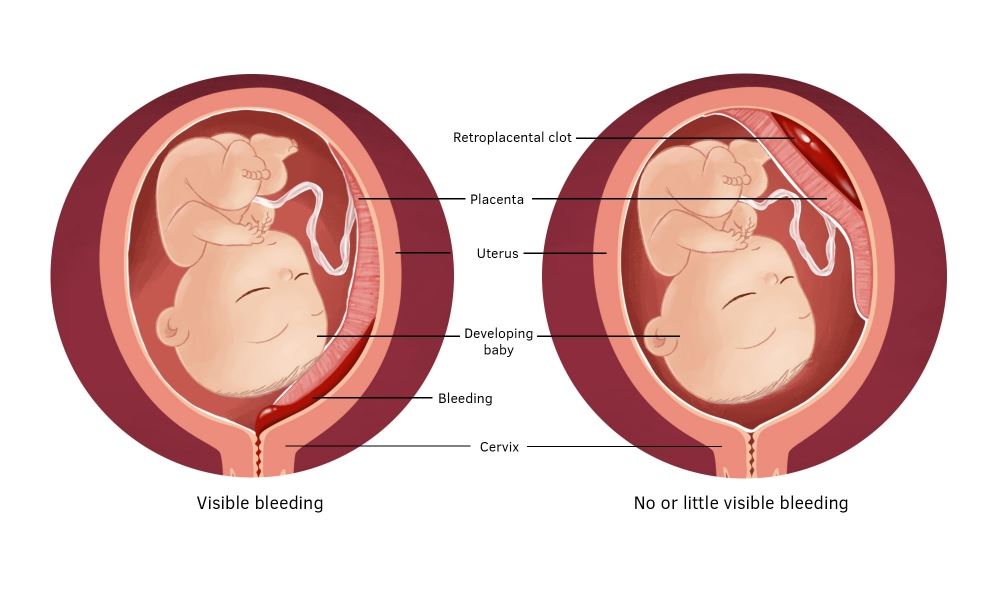

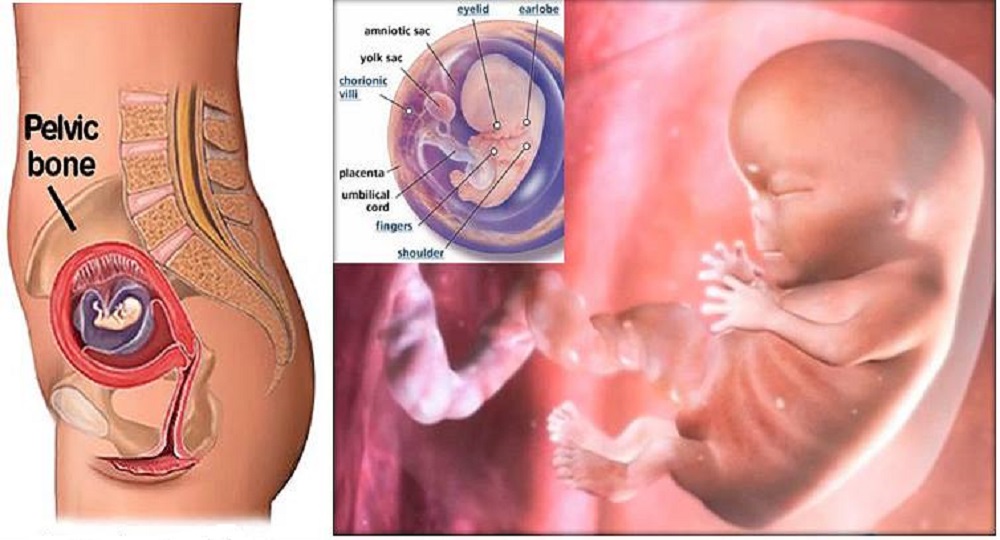 4 or more degrees Fahrenheit and/or chills
4 or more degrees Fahrenheit and/or chills nlm.nih.gov/medlineplus/ency/article/003264.htm
nlm.nih.gov/medlineplus/ency/article/003264.htm With a low level of the hormone, the body starts the process of menstruation. Bloody discharge during pregnancy appears when the uterine mucosa is exfoliated. The situation may adversely affect the implantation of the fetal egg.
With a low level of the hormone, the body starts the process of menstruation. Bloody discharge during pregnancy appears when the uterine mucosa is exfoliated. The situation may adversely affect the implantation of the fetal egg.
 Hemorrhage around the placenta most often resolves on its own. But it increases the risk of preterm birth and other complications.
Hemorrhage around the placenta most often resolves on its own. But it increases the risk of preterm birth and other complications.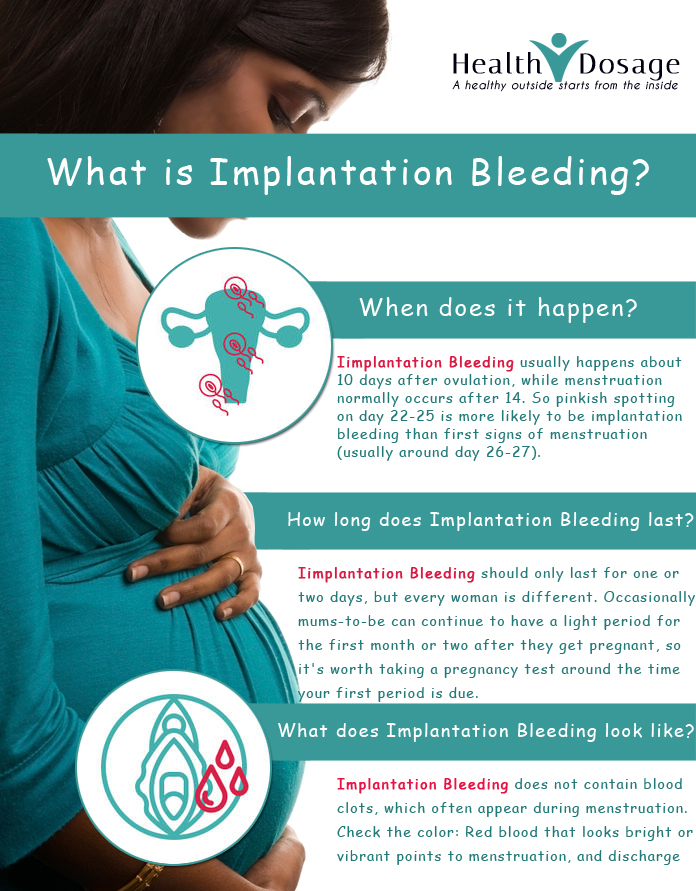 Discharge with blood at 6 weeks of pregnancy is a reason for an urgent visit to the gynecologist.
Discharge with blood at 6 weeks of pregnancy is a reason for an urgent visit to the gynecologist.
